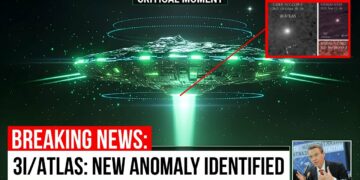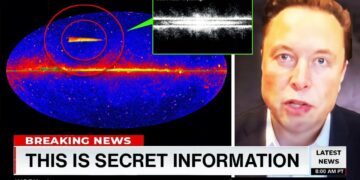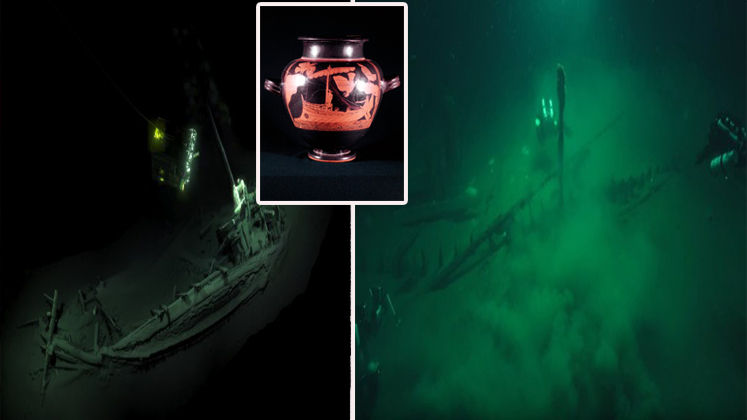Voyager 1, humanity’s farthest-reaching creation, streaks through interstellar space, over 15 billion miles from Earth. Carrying scientific data and the iconic Golden Record, it still beams faint signals home. Recently, NASA’s AI-powered quantum chip uncovered something startling in routine data: an enigmatic, unanticipated message. Is this a cosmic anomaly or something else entirely? What secrets might Voyager 1 hold?
Voyager 1’s Genesis
Launched on September 5, 1977, Voyager 1 was part of NASA’s ambitious mission to explore the outer solar system. Its twin, Voyager 2, launched two weeks earlier on a different path. Inspired by the Mariner and Pioneer missions, Voyager aimed to study gas giants up close before venturing beyond our planetary neighborhood. A rare planetary alignment, occurring every 176 years, allowed gravitational slingshots to propel Voyager 2 past Jupiter, Saturn, Uranus, and Neptune. Voyager 1 focused on Jupiter and Saturn before exiting the ecliptic plane post-Saturn. Built with lessons from Pioneer’s Jupiter radiation encounters, Voyager 1 featured robust shielding, redundant systems, and advanced instruments. Designed under tight time and budget constraints, it was meant to collect data during brief flybys but has outlasted expectations, becoming the first human-made object in interstellar space.
Engineering a Deep Space Explorer
Voyager 1’s design tackled deep space challenges: harsh radiation, dim light, and long communication delays. Powered by three radioisotope thermoelectric generators using plutonium-238, it converts radioactive decay heat into steady electricity. A 3.7-meter high-gain antenna transmits data to Earth, where ultra-sensitive receivers capture faint signals. Data rates, initially kilobits per second near Jupiter, slowed as distance grew. Instruments include cameras, a plasma spectrometer, cosmic ray detectors, a magnetometer, and a plasma wave device, all hardened against radiation. The magnetometer sits on a long boom to avoid electronic noise, and cameras are on a rotatable platform. Limited memory—tens of kilobytes—required efficient data management, stored on tape recorders when real-time transmission wasn’t possible. Radiation shielding, error-correcting protocols, and redundancy protected its vintage circuits, proving vital as issues arose far beyond Saturn.
Journey Through the Outer Planets
Voyager 1 used Jupiter’s gravity for a slingshot to Saturn. In 1979, it entered the Jovian system, capturing stunning images of turbulent clouds, the Great Red Spot, and Io’s volcanic eruptions—the first observed outside Earth. Europa’s icy surface and Ganymede’s complex terrain fascinated scientists. Its instruments mapped Jupiter’s vast magnetic field, enduring intense radiation. In 1980, Saturn’s flyby revealed braided ring patterns, tiny ringlets, and Titan’s dense nitrogen-rich atmosphere, paving the way for future missions like Cassini-Huygens. Close passes of Saturn’s rings showed gaps like the Cassini Division and mysterious radial spokes. After Saturn, Voyager 1 ascended above the solar system’s plane, beginning its Voyager Interstellar Mission while Voyager 2 continued to Uranus and Neptune.
Entering Interstellar Territory
Voyager 1 approached the heliosphere’s edge, where the sun’s solar wind forms a bubble. The heliopause, its outer boundary, marks true interstellar space. By the mid-2000s, particle changes signaled the termination shock, where solar wind slows. In August 2012, Voyager 1 crossed the heliopause, confirmed by increased cosmic rays, fewer solar particles, and denser plasma. Now beyond the sun’s influence, it studies interstellar space, monitoring cosmic rays, magnetic fields, and environmental shifts. Its faint signals, delayed over a day, provide humanity’s first close-up look at the medium between stars, revealing how stars interact with the galactic void.
A Strange Signal Emerges
In March, Voyager 1’s telemetry data turned abnormal, resembling digital static rather than system health metrics. Rebooting memory and switching subsystems failed to resolve the issue. The flight data system (FDS) or degraded memory was suspected. Young engineers proposed quantum pattern recognition, inspired by cosmic noise experiments, to detect hidden patterns. NASA approved the test, and the analysis revealed repeated segments in the corrupted data—unusual for hardware failures, which typically produce random noise. NASA confirmed Voyager 1’s stability but noted the anomaly warranted further study. Speculation grew: was this a malfunction or evidence of something new?
NASA’s Response to Telemetry Issues
Troubleshooting a spacecraft 15 billion miles away is daunting. Commands take over 20 hours to reach Voyager 1, with responses equally delayed. NASA’s team tested memory segments, rerouted data, and switched to redundant hardware, focusing on the FDS. Shifting housekeeping data to new memory partially restored key metrics like orientation and voltage, but strange data bursts persisted. Quantum researchers noted repeated patterns, while NASA ruled out ground interference by comparing Deep Space Network (DSN) station inputs. By spring, NASA reported partial resolution but acknowledged unexplained anomalies, likely due to degrading hardware. Quantum tools remained experimental, with classical engineering as the primary approach.
Understanding the Flight Data Subsystem (FDS)
The FDS collects instrument and system data, formats it with error correction, and transmits it to Earth. Malfunctions, like corrupted data or misdirected memory, produce garbled signals. Built with 1970s circuits, the FDS has been reliable, with permanent memory for instructions and temporary regions for tasks. Occasional software updates maintained its core architecture. Patterned data failures are rare, as memory issues typically yield noise or incomplete frames. NASA confirmed signal integrity across DSN receivers, ruling out external interference. Engineers bypassed failing memory blocks with software patches, avoiding the risky backup FDS, which hasn’t been used in decades. The FDS remains critical for all data flow.
The Golden Record’s Legacy
Voyager 1 carries a gold-coated copper disc, the Golden Record, with Earth’s sounds, images, and greetings in multiple languages, curated by Carl Sagan’s team. It includes music, natural phenomena, and scientific diagrams for potential finders. Analog, not digital, it has no link to telemetry systems. Speculation about record data leaking into signals was dismissed by NASA. The record symbolizes humanity’s cosmic outreach, amplifying Voyager’s cultural legacy beyond its scientific role.
Communications Across the Void
Communicating with Voyager 1, 15 billion miles away, is a technical marvel. Signal strength weakens with distance squared, requiring 70-meter DSN antennas and sensitive receivers. Commands take nearly a day for a round trip, demanding precise planning. Fading power has forced NASA to shut down some systems, prioritizing efficient communication. The scrambled telemetry raised questions about external signal injection, but NASA found no evidence. Backup transmission tests confirmed the anomalies originated from Voyager, warranting deeper analysis.
Studying the Interstellar Medium
Despite issues, Voyager 1 provides data on interstellar space, measuring cosmic rays and magnetic fields beyond the heliopause. Comparing its data with Voyager 2’s maps the heliosphere’s edge. Plasma compressions from solar shock waves and interstellar dust impacts reveal galactic matter cycles, shedding light on star formation and cosmic origins.
Maintaining the Signal
Maintaining Voyager 1’s data link is a triumph of coordination between antennas, receivers, and software. Slow command-response cycles demand patience. NASA’s quantum-enhanced diagnostics, like the Majorana 1 chip, hint at future mission tools, but classical engineering remains the backbone. Voyager 1’s mission will continue until its power fails, offering insights into the cosmos. When its signal fades, it will mark the end of a historic journey, carrying humanity’s curiosity and the Golden Record into the galaxy’s depths.

























